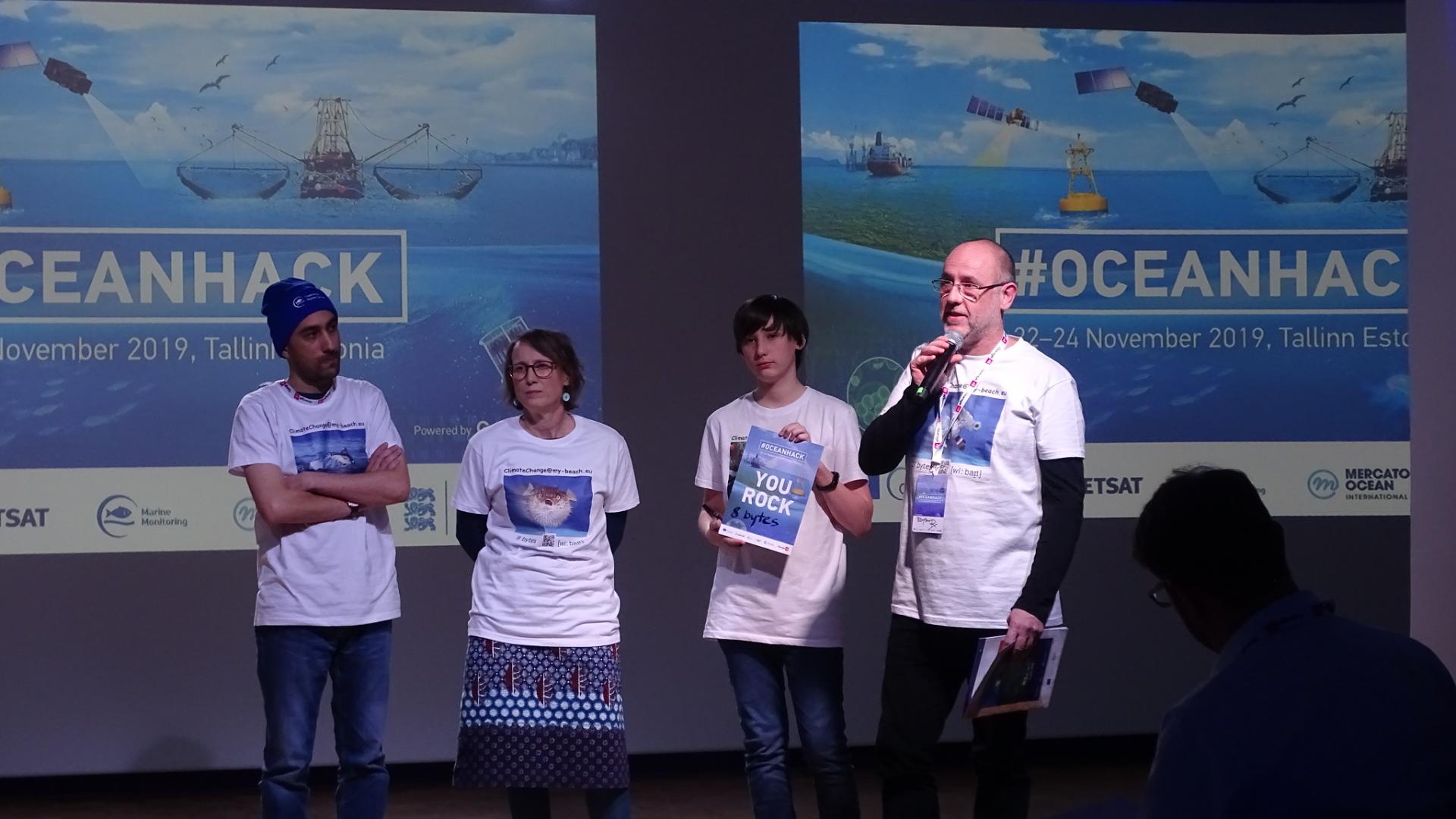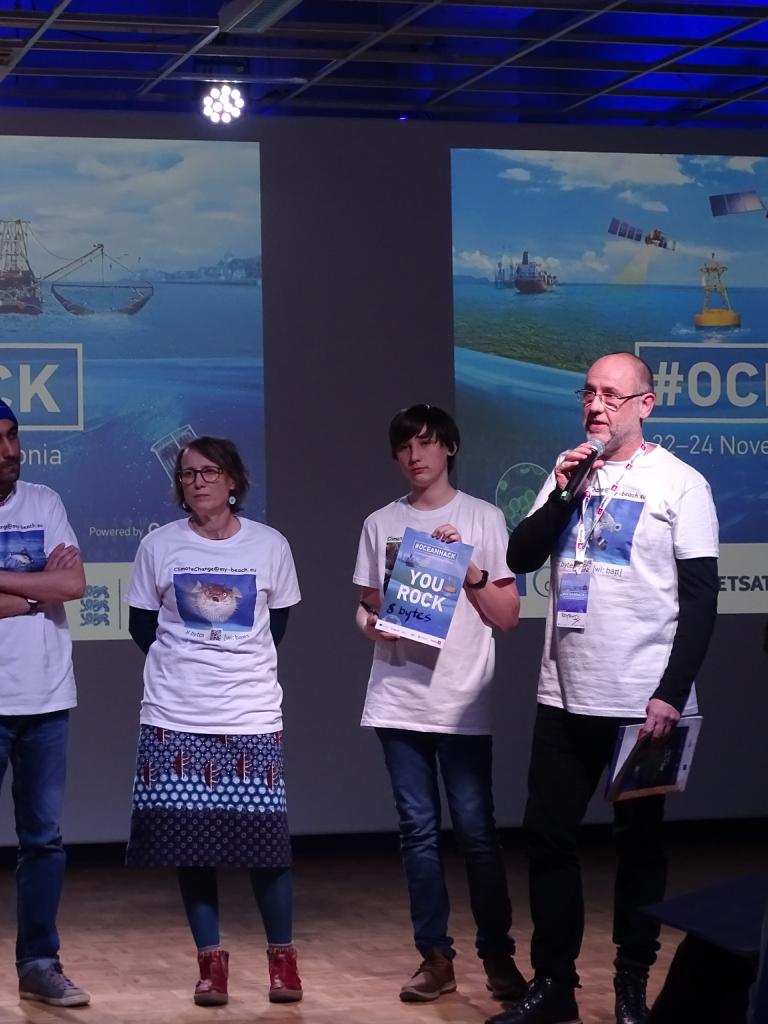
Data in Action: Innovative platform to access complex marine data
The Marine Analyst platform enables even the most tech-unsavvy person to access custom analyses of over 1,600 marine environmental datasets


First developed at an ocean hackathon, the Marine Analyst is a platform that makes it easy for technological beginners to create custom analyses of marine environmental databases. The platform’s founder, Pascal Derycke, developed this platform to get important environmental data into the hands of conservationists, park rangers, students, and others in order to enable them to make a difference.
01 November 2023
11 October 2021
Articles in this series explore how entrepreneurs are using data from EUMETSAT and partners to develop innovative products that impact people’s lives.
Dr. Pascal Derycke has a knack for developing cutting-edge digital platforms.
Back in the mid-nineties, while working towards a doctorate in physics in Metz, France, he saw a glimmer of opportunity in a budding and uncertain network: the Internet. Captivated, he developed a precursor to a content management system, software that makes it possible for even the most technologically inexpert person to create a website. Anyone who has ever used Wordpress to make a recipe blog – or consulted one to learn how to fry perfectly crispy churros – has benefited from this kind of tool.
Developing this early platform only left Derycke wanting more. Fast-forward nearly twenty years: he was working as a technical coordinator for the European Marine Observation and Data Network in Brussels when he went to Tallinn, Estonia to participate in an ocean hackathon, an event at which small teams of software developers compete to solve a common problem. At this one, co-organised by EUMETSAT, the Copernicus Marine Environment Service and the Estonian Environment Agency, Derycke’s team first dreamed up an online marine data portal that would allow non-coders to access datasets related to the marine environment.

Finally, in September 2020, the Marine Analyst was launched. The platform draws from over 1,600 marine datasets to produce individualised, easy-to-interpret analyses that can be used by the general public and experts alike. A conservationist interested in the health of a particular French beach, for instance, could use the platform to find out about the history of bathing water quality, as well as the quantity of washed-up litter broken down by type (wood, glass, metal, cloth). Or the platform could be used by a student to discover more about ancient underwater landslides in Scandinavian seas.
Crucially, the Marine Analyst gets data into the hands of people who can use it to make a difference. Take, for example, a park ranger interested in the health of a marine protected area, a section of an ocean, sea, or other body of water that has been restricted from human activity for conservation purposes. She simply selects her marine protected area from a list, enters the month she would like data from, and, within a minute, the Marine Analyst produces a report. From this, she can easily see how oceanographic conditions such as the sea surface temperature and concentration of chlorophyll vary across the area in question.
“Before this platform, a park manager could never have produced something like this herself, she would have needed to contact an expert or university department to produce such an analysis,” said Derycke.
“Now, for the first time, a park manager can browse through all the data on her marine protected area in one place and combine this with her own observations and data to try to understand what is happening, which is immensely useful for monitoring the health of these places.”
The Marine Analyst runs on and gets its data from the reference service WEkEO, which is a collaborative effort on the part of EUMETSAT, Mercator Ocean International, the European Centre for Medium-Range Weather Forecasts, and the European Environment Agency to bring Copernicus environmental data to people who can put it to good use. This extensive data, in turn, comes from the EU Copernicus Programme’s Sentinel satellites operated by EUMETSAT and the European Space Agency as well as from in situ observations and model outputs from the Copernicus atmosphere, climate, marine, and land services. And while it is possible—and fruitful—to access the Copernicus data using WEkEO directly, the Marine Analyst makes the process of accessing marine data from Copernicus and other sources even simpler; it can be as easy as selecting a location on a map and searching by topic. Someday, though, exerting even this amount of effort won’t be necessary.
“In the future, you could go to your device and say, ‘OK Google, how salty is the water outside Washington DC?’ and Google would have stored the information, crawled the analysis, and be able to tell you,” said Derycke.
Until then, there’s the Marine Analyst.
Curious to learn how to use the Copernicus WEkEO platform to access ocean, atmospheric, terrestrial, and climate data?
Enrol in AI for Earth monitoring, a new massive open online course (MOOC) from EUMETSAT, the European Centre for Medium-Range Weather Forecasts, the European Environment Agency, and Mercator Ocean International.
After completing the course, participants will be:
- proficient in navigating the extensive WEkEO data catalogue, and
- equipped with the tools to use Artificial Intelligence and machine learning techniques to develop their own uses for the data.
The course opens 18 October 2021 and will continue to be available until 17 October 2022.
Interested participants can register here.
Author:
Sarah Puschmann